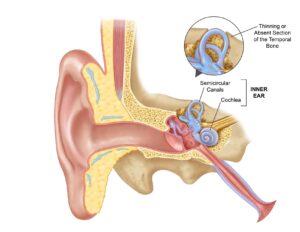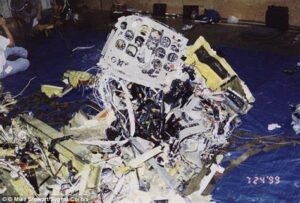Flying airplanes in conditions of zero visibility is doable. Due to Instrument capability, navigation aids, and ground-controlled coordination, flights in such conditions are being routinely practiced by commercial and military aircraft. However, it is the physiological human factors that conflict with instrument precision that so often result in the deaths of non-professional pilots.
“Flying by the seat of your pants” is a myth. The phrase suggests that the pull of gravity would be felt by your lower extremities, indicating three-dimensional orientation. Nothing is further from the truth. A person’s inner ear with its semicircular canals is a normally dependable system that allows one to walk upright into a dark unlighted room, preventing an unbalanced fall into the coffee table. However, if a person were to spin around quickly, or raise and lower one’s head repeatedly, the fluid and hair cells in the three semicircular canals of the inner ear, arranged at right angles to each other, sends erroneous signals to the brain. One canal senses rotation on a vertical plane and two canals sense movement up and down as when nodding. If affected by this vertigo and responding to regain the perceived uprightness in that darkened room, you would find yourself tumbling into unseen furniture.

A marginally trained or inexperienced pilot is subject to spatial disorientation. The aircraft’s instruments and nav aids, although indicating exact position, orientation, and direction to a safe landing, due to head movement, can create sensations that tell a pilot he is in a turn, or has become inverted. Not trusting your instruments and responding to vertigo is a killer.
Military and professional commercial pilots are trained to ignore these conflicting inner ear sensations and to trust their instruments.
The recent Bloomington aircraft accident and resulting death Is still under investigation. It wasn’t said if the pilot was on an instrument flight plan or was instrument qualified. Regardless, my guess is that with the reported fog and low visibility, even if the pilot was instrument rated, he may have been trying to see visually and became conflicted and distracted from a strict focus on his instruments.
I believe that is what happened to John Kennedy, Jr. He was flying up the coast of New England at night on the way to Martha’s Vineyard. Nighttime lights along the coastline would have allowed him visual orientation. Then Kennedy turned directly toward Martha’s Vineyard out over the open ocean no longer having visual references. Kennedy was not instrument rated and although the forecast indicated the weather was acceptable for visual flying (VFR), the wreckage of his aircraft shows the plane was out of control and impacted the water at a very high velocity. Those last moments for Kennedy, his wife and sister-in-law must have been horrifying. So sad.

Kennedy’s Aircraft Wreckage
I always learn something! Great blog!
Same here. I went to the doctor today to complain about a variety of systems. This included loss of balance, claustrophobia, and other balance issue. Maybe its something we caught at NCC. Just a thought.
I’m 82 and thinking too much.
Your friend,
Bambi
Concur- single pilot in hard IFR is very dangerous
Hi Jim. This last summer on the golf course, I had an issue that was eventually determined to be vertigo. I was playing with our Thursday group and after playing 5 holes, I began to become very dizzy losing my balance. I ended with nausea and vomiting. One of the guys in my foursome, a retired state trooper was concerned about stoke and called 911. After weeks of therapy, I have had no symptoms since.